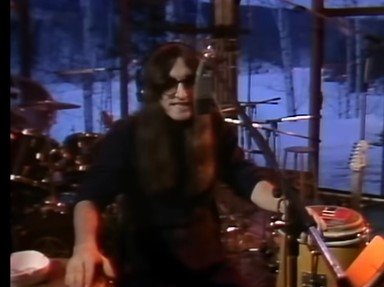Quiz Answer Key and Fun Facts
1. The first album that Rush released in the 1980s was their seventh studio album overall and the first they recorded at Le Studio in Quebec. What album was this?
2. "The Spirit of Radio" alludes to a song by what folk duo with the claim that "the words of the profits are written on the studio wall?"
3. Rush's eighth studio album, "Moving Pictures," includes the song "Tom Sawyer." Neil Peart is credited as writing this song in collaboration with what fellow Canadian songwriter and poet?
4. "Moving Pictures" saw the introduction of this series of songs with "Witch Hunt." What is this series called, which consisted in total of four songs released between 1981 and 2002?
5. The 1982 album "Signals" features the only Rush song which credits all three band members as writers. What song is this, which originated from soundchecks on the "Moving Pictures" tour?
6. What breed of dog, known for working well with horses, appears on the cover of "Signals?"
7. What U.S. author is quoted in the lyrics of "Losing It" and the title of Rush's tenth album, "Grace Under Pressure?"
8. The song "Afterimage," the second track on the North American release of "Grace Under Pressure," was, according to the liner notes, written about whom?
9. What was the name of Rush's 11th album, released in 1985?
10. "The Big Money" takes its name from the final part of the U.S.A. trilogy of novels. Who wrote them?
11. What is true about the song "Time Stand Still?"
12. What character actor appears on the inside sleeve of "Hold Your Fire" juggling three fireballs? He also appeared in "Hard to Kill" and "UHF."
13. For their 1989 album "Presto," Rush chose not to renew their record deal and, incidentally, were turned down by producer Peter Collins, meaning that the new album would be on a new label with a new producer. The label was Atlantic Records - who was the producer?
14. One track on "Presto" is titled "Anagram (for Mongo)" in reference to a joke about a "candygram" from what Mel Brooks film?
15. What graphic designer is credited with the design of every studio album Rush released from 1975 onward?
Source: Author
OddballJunior
This quiz was reviewed by FunTrivia editor
1nn1 before going online.
Any errors found in FunTrivia content are routinely corrected through our feedback system.
